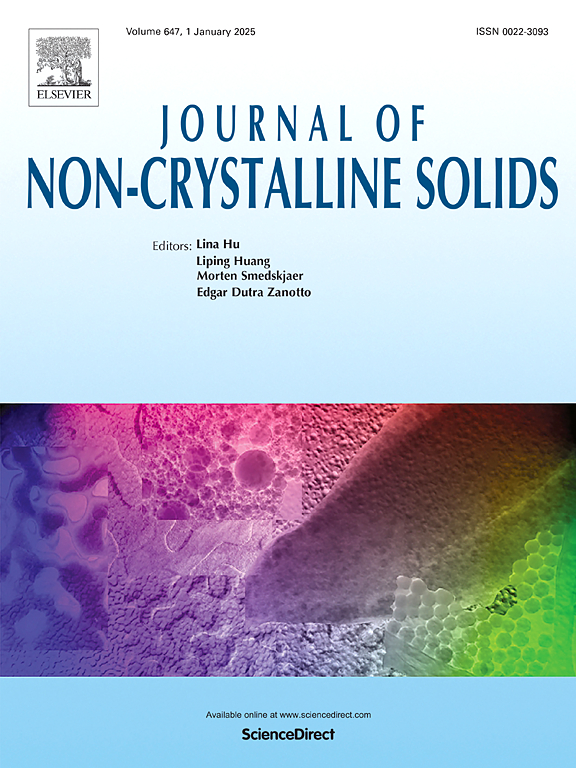Effects of electron irradiation on fibers prepared from the self-developed Chang’E-5 lunar regolith simulant
IF 3.2
3区 材料科学
Q1 MATERIALS SCIENCE, CERAMICS
引用次数: 0
Abstract
The design of fiber-reinforced composites is considered as a feasible way to withstand the irradiation environment in lunar base construction, and fibers play an important role as reinforcement materials. In this work, we focused on the fiber spinnability of the self-developed Chang’E-5 lunar regolith simulant (LRS) and the effect of the electron irradiation on the structures and properties of the fiber. The results showed that the surface of the irradiated fibers was smooth and no crystal were formed, but the thermal stability of the fibers was altered, with the fiber S4 irradiated at a moderate fluence of 4 × 1015 e cm-2 having the lowest thermal stability. In addition, the tensile strength of the fibers showed a tendency to increase and then decrease, with the fiber S4 giving the highest tensile strength. FTIR, Raman and XPS spectroscopic analyses indicated the same trend of degree of polymerization (DOP) and the bridging oxygen (BO) content with tensile strength. The Mssbauer spectra revealed that the Fe3+and Fe2+ content in the fibers was changed by electron irradiation, with the S4 fiber exhibiting the highest Fe3+ content, resulting in more Fe3+ to form [FeO4] tetrahedra, thus strengthening the network structure.
电子辐照对自行研制的“嫦娥五号”月球风化模拟材料纤维的影响
纤维增强复合材料的设计被认为是月球基地建设中抵御辐射环境的可行途径,纤维作为增强材料发挥着重要的作用。本文主要研究了自主研制的“嫦娥五号”月球风化模拟材料(LRS)纤维的可纺性,以及电子辐照对纤维结构和性能的影响。结果表明,辐照后的纤维表面光滑,无结晶形成,但纤维的热稳定性发生改变,其中4 × 1015 e cm-2中等辐照量下的S4纤维热稳定性最低。纤维的抗拉强度呈现先升高后降低的趋势,其中S4纤维的抗拉强度最高。FTIR、Raman和XPS光谱分析表明,聚合度(DOP)和桥接氧(BO)含量随拉伸强度的变化趋势相同。mo¨ssbauer谱显示,电子辐照改变了纤维中的Fe3+和Fe2+含量,其中S4纤维中Fe3+含量最高,导致更多的Fe3+形成[FeO4]四面体,从而强化了网络结构。
本文章由计算机程序翻译,如有差异,请以英文原文为准。
求助全文
约1分钟内获得全文
求助全文
来源期刊

Journal of Non-crystalline Solids
工程技术-材料科学:硅酸盐
CiteScore
6.50
自引率
11.40%
发文量
576
审稿时长
35 days
期刊介绍:
The Journal of Non-Crystalline Solids publishes review articles, research papers, and Letters to the Editor on amorphous and glassy materials, including inorganic, organic, polymeric, hybrid and metallic systems. Papers on partially glassy materials, such as glass-ceramics and glass-matrix composites, and papers involving the liquid state are also included in so far as the properties of the liquid are relevant for the formation of the solid.
In all cases the papers must demonstrate both novelty and importance to the field, by way of significant advances in understanding or application of non-crystalline solids; in the case of Letters, a compelling case must also be made for expedited handling.
 求助内容:
求助内容: 应助结果提醒方式:
应助结果提醒方式:


